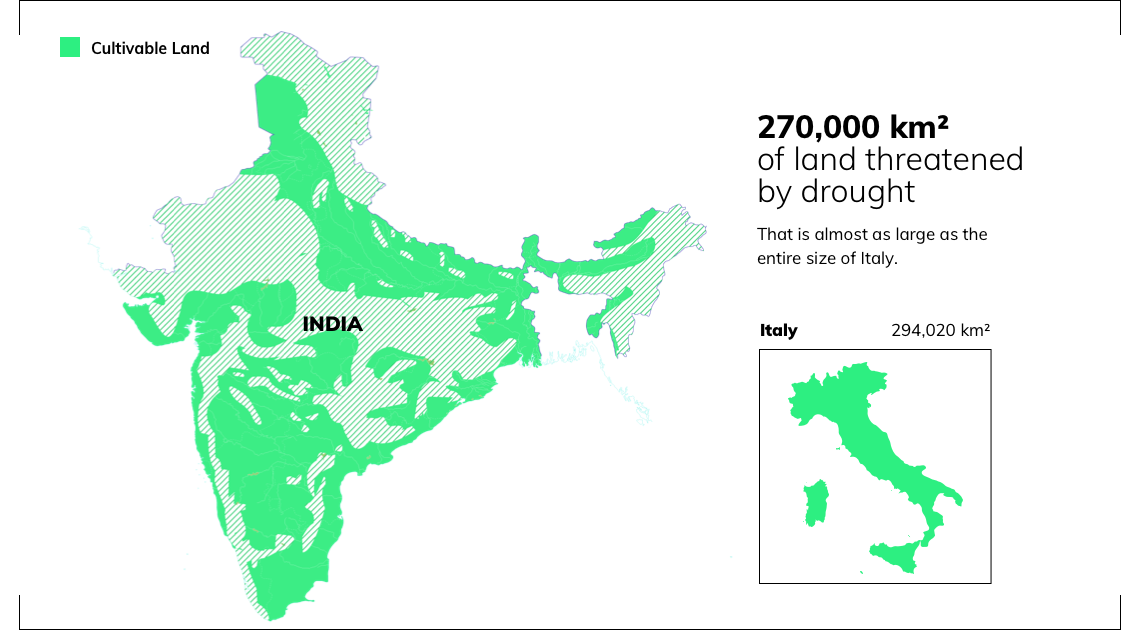Oct 31, 2022
India’s Drought Risk Threatens Farmland the Size of Italy

Challenge
India’s 1.3 billion people face an array of profound climate risks. Some are here today. Extreme heat already creates huge problems in India, where some areas reached 49 degrees Celsius (120 degrees Fahrenheit) in May 2022. The potential risk to human workers in such circumstances is self-evident—and deeply worrying.
PwC analysis finds that over the next 30 years, drought is putting 270,000 square kilometers of India’s cultivable land at risk.
Impact
“The threat to cultivable land represents a potential humanitarian and sociopolitical crisis as well as a climate risk, which demands collaboration between government and business,” says Robert N. Bernard, Climate Risk Modeling, Director, PwC US.
Bernard believes we need to develop a collective plan that includes climate resilient infrastructure, climate mitigation and adaptation efforts. And India is far from alone. Many regions around the world face increasing climate risks.
CEOs must focus on the urgent need to cut emissions, but they must also start planning for the physical effects of climate change at the local and regional level—like the extreme heat, drought and the erratic rains and flooding experienced in India.
Business leaders can start to build resilience by viewing physical climate risks in these dimensions:
- Identify your operations and dependencies exposed to climate risk.
- Review your entire value chain, from upstream suppliers to downstream markets.
- Consider the economic, social and political disruptions stemming from climate risks, but don’t forget the possible business opportunities which can include new products and services, business models, and even new markets that help address the contributing factors to climate risk.
- Collaborate with government and communities to enhance resilience.
Takeaway
One major climate risk blind spot is how dependent businesses everywhere are on elements outside their own operations. PwC Global Climate Leader and Partner Emma Cox refers to these types of climate risks as ”unsighted consequences.”
Case in point: “You need to think about how your preparedness fits that of the wider environment, and work with government, the public sector, communities and value chain actors to help enhance the resilience of the entire ecosystem,” Cox says. “We believe businesses should participate in the design and implementation of adaptation strategies as well as decarbonisation transformation processes—this will not only benefit the business itself, but also society and our planet.”
PwC refers to the PwC network and/or one or more of its member firms, each of which is a separate legal entity. Please see https://www.pwc.com/structure for further details.



